June 15, 2012. It’s a date engrained in the minds of so many Imagineering fans because on that otherwise-ordinary Friday, something happened that had never before occurred in the history of Disney Parks. At 9:00 AM, the gates to Disneyland’s sister theme park re-opened after a single, symbolic day of closure. When they did, guests were ushered into a park reimagined.
The story really began with our Disney’s California Adventure: Part I feature, exploring the initial opening of Disneyland’s second gate back in 2001. In that entry, we walked through not just the development of a theme park centered on California, but on the experience guests found within – an under-built, undmarer-funded park that was infamously short on rides, had practically nothing for families to do, and – worse – went out of its way to differentiate itself from Disneyland by throwing out the rule book.

Then, as we saw in Disney’s California Adventure: Part II, a wave of reinvention swept the park – first via a series of “Band-aid” fixes meant to bolster its lineup, then as a $1.2 billion, master-planned, five year redesign. Between 2007 and 2012, the renamed Disney California Adventure was stripped of its modern ornamentation and redrawn as a park celebrating California through historic, idealized “lands” and lots of Disney and Pixar characters.
When it re-opened on June 15, 2012, the reborn California Adventure was nothing short of an Imagineering triumph; a park “righted” and placed on a new track; honoring its Californian roots but embracing Disney “magic.” But then things started to change… Today, in the final chapter – Part III – of our California Adventure story, we’ll trace what’s happened to the park after its 2012 relaunch for better and worse… Settle in…
And before we head off, remember that you can unlock rare concept art and audio streams in this story, access over 100 Extra Features, and recieve an annual Membership card and postcard art set in the mail by supporting this clickbait-free, in-depth, ad-free theme park storytelling site for as little as $2 / month! Become a Park Lore Member to join the story! Until then, let’s start at the beginning…
Golden state of affairs

In the wake of Disney California Adventure’s five year, $1.2 billion reimagining, Disneyland’s second gate seemed to have found itself. Where the park’s original thirst for edginess, modernity, and “MTV attitude” had faltered, the sturdy foundation developed for Disneyland a half century earlier came through: timelessness, history, romance, and idealization. To visit the park in the years after its reintroduction was to see a park embracing itself and understanding its potential at last.
While Millennials may have developed a soft spot for the little counter-cultural park across from Disneyland and its early-2000s quirks, there’s simply no question that after its metamorphosis the park was better outfitted for long-term survival. Disney’s billion dollar investment primarily went toward fixing the park’s foundational flaw by re-invigorating each of California Adventure’s lands as historic, reverent, thoughtful ones celebrating California’s beauty, heritage, and history rather than poking fun at its present.
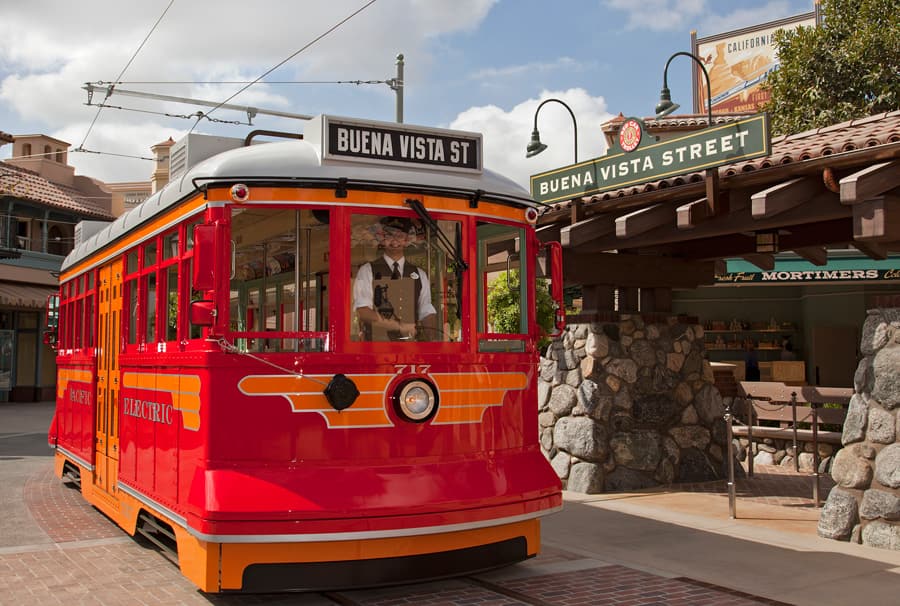
Think about it. Entering through the roaring streets of a 1920s Los Angeles; exploring a Hollywood of the 1940s reigned over by the Hollywood Tower Hotel; a misty, lantern-lit Californian National Park of the 1950s, with its stunning mountainside airfield hosting Soarin’ Over California; a turn of the century boardwalk alight with humming Edison bulbs and pie-eyed Disney characters; and Cars Land, a tribute to the Mother Road and Route 66’s roadside wonders – an entire mid-century town of neon signs, doo-wop diners, natural splendor, and road trips that defined California’s car culture.
Of course California Adventure wasn’t “complete,” especially measured against the barometer that is Disneyland (stuffed with more rides, more E-Tickets, and more dark rides than any Disney Park on Earth.) But all in all – from the Red Car News Boys to Minnie’s Fly Girls; Aladdin: A Musical Spectacular to World of Color; Radiator Springs Racers to “a bug’s land”; a reimagined Paradise Pier to the Twilight Zone Tower of Terror – this was a Disney Park that had found its footing and taken the first very important steps down a spectacular path. In California Adventure, there were glimpses of the excellence of DisneySea – something few would’ve imagined could be drawn out of the park a decade earlier.
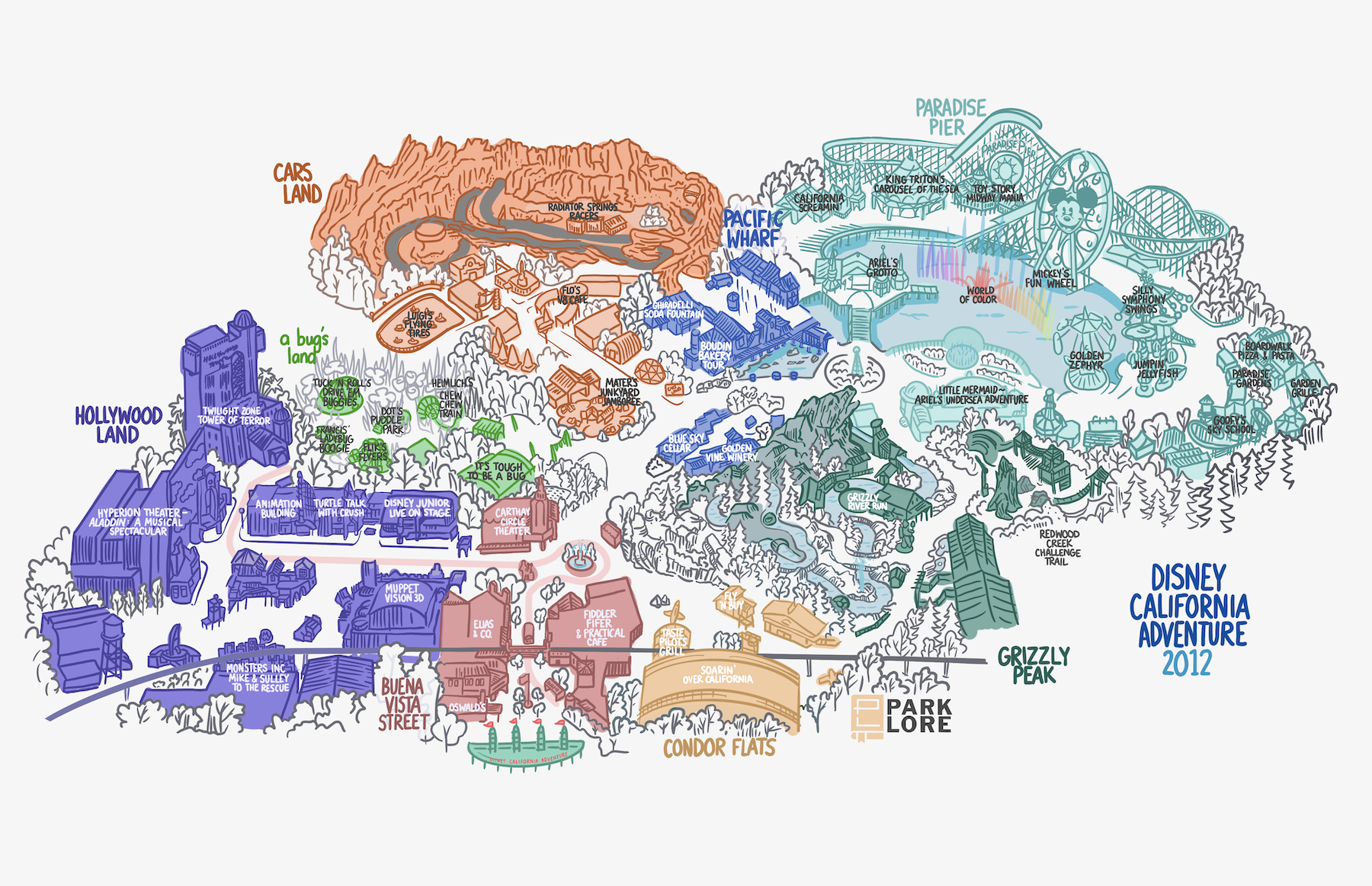
When we left off in Disney’s California Adventure: Part II, this is the park we’d left behind. Buena Vista Street, Hollywood Land, “a bug’s land,” Condor Flats, Grizzly Peak, Cars Land, Pacific Wharf, and Paradise Pier…
It’s important that we remember that… That at last, California Adventure was “fixed,” having set a clear path to follow. Here, Imagineering really had figured out how to celebrate the Golden State, crafting a lineup of eight “lands” that were distinctly Californian. At last, they’d figured out how the stories and settings of California could pass through Disney’s signature lens of pseudo-history, fantasy, and romance to create memorable spaces and feature spectacular stories.
But any thoughtful reflection on “DCA 2.0” also needs to broach another topic…
Too much, not enough
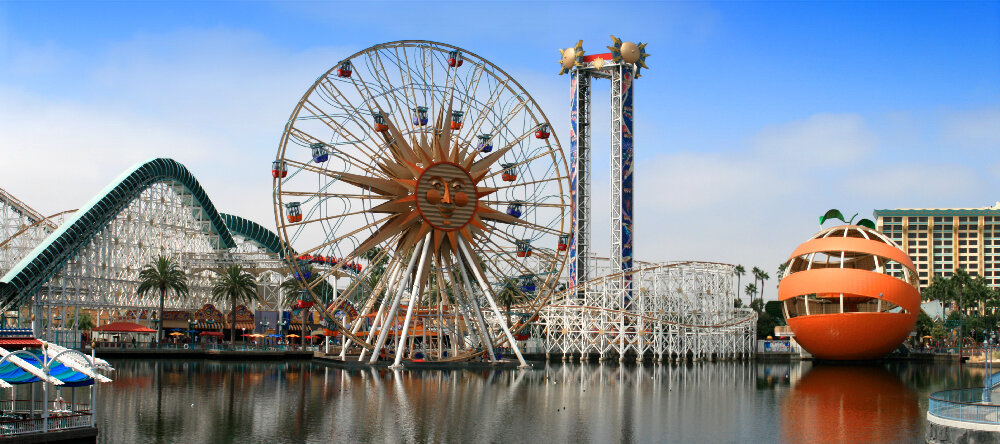
One of the earliest and most concise criticisms of California Adventure had been that the park was “too much California, not enough Disney.” It would’ve been a fair assessment in 2001! “DCA 1.0” intentionally excluded Disney characters, even to the detriment of families and the weakening of the brand. This, after all, was meant to be a serious park; one appealing to thrill-seekers, tourists, foodies, and wine connoisseurs.
To be sure, that was a complaint Disney needed to address, and you can see their work to do so in even the early, “Band-Aid” additions to the park – “a bug’s land” as a whole-hearted embrace of families; “Steps in Time” being replaced by “Aladdin: A Musical Spectacular” in the Hyperion Theatre; Brother Bear joining the Redwood Creek Challenge Trail; the ABC Soap Opera Bistro folding to make room for a Disney Jr. Live on Stage playhouse…
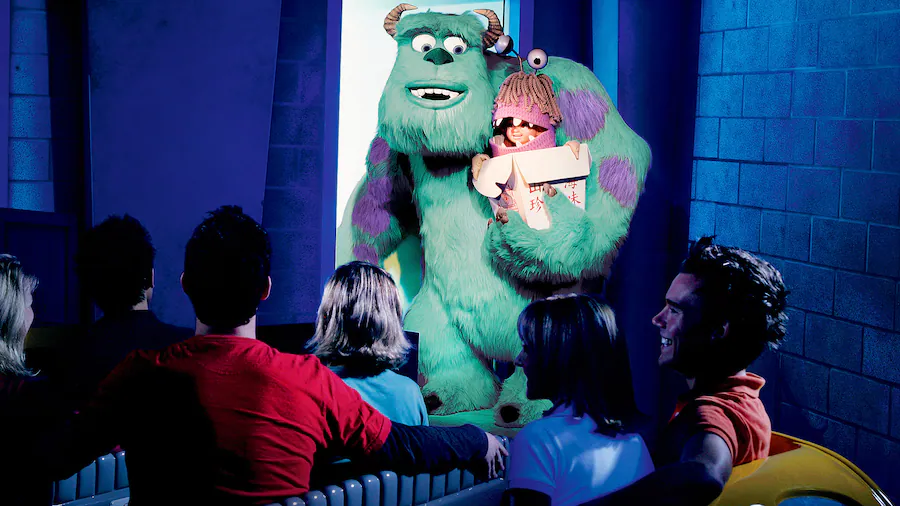
Seeing such life added to the park, it seemed silly to quibble over whether or not Aladdin or Brother Bear or Disney Junior or A Bug’s Life really made any sense in a park themed to California, because frankly, a purist bar to entry seemed like the last thing the park needed.
And who would complain about it? Would anyone seriously mourn the loss of the Bountiful Valley Farm as it was absorbed into “a bug’s land”? Could anyone in good conscience say that Monsters Inc.: Mike & Sulley to the Rescue was not an improvement on Superstar Limo? And once Disney purchased Pixar in 2006, why would fans expect anything but to see the blockbuster studio’s beloved characters serve as a basis of California Adventure’s five year plan?
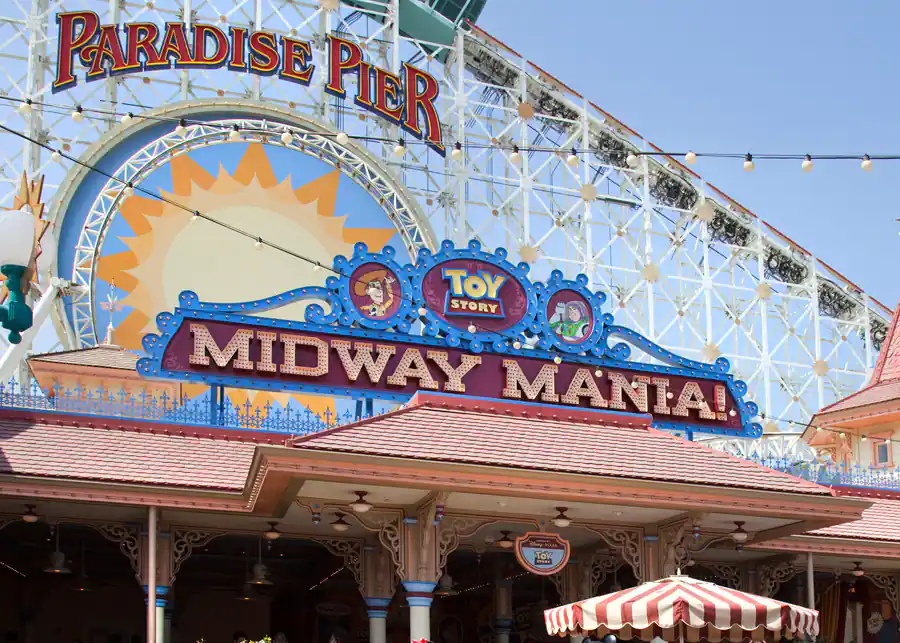
Would anyone bother arguing that Toy Story Midway Mania should not come to Paradise Pier? Even if the intellectual property itself didn’t necessarily fit in a park ostensibly honoring the Golden State, Imagineers used Midway Mania to install a high-tech dark ride embedding interactive boardwalk midway games into a lovely, seaside, Victorian ballroom that shifted the clock of Paradise Pier backwards, and that had to be worth something!
In one fell swoop, Midway Mania managed to hit the criteria for more rides, more for families, more characters, and – in its way – a defining anchor for a lovely, timeless, romantic, historic facelift for Paradise Pier. A win-win, right?!
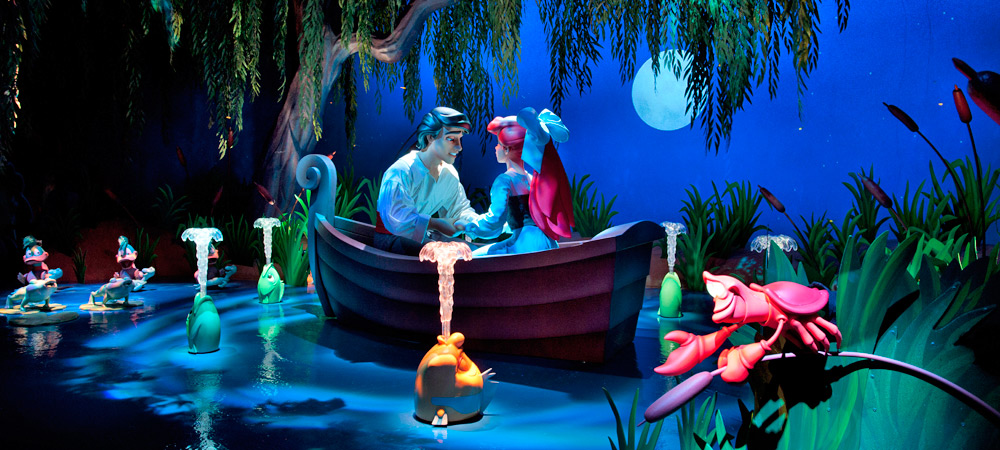
That theme continues with the other products of the $1.2 billion… Though at the cost of “Golden Dreams” – a film attraction honoring California’s historic figures – a Little Mermaid dark ride was a net gain to be sure, and in a lovely Californian aquarium that fit the brief for a reborn park… (Built today, Imagineers would likely have just built Prince Eric’s castle at California Adventure, for better or worse.)
And so it goes with Disney characters (classic ones!) overtaking Paradise Pier, and of World of Color – such a much-needed nighttime spectacular, and beautifully encapsulating the color and emotion and music of Disney Animation, which, of course, is produced in California if you really want to be picky, but why would you be?
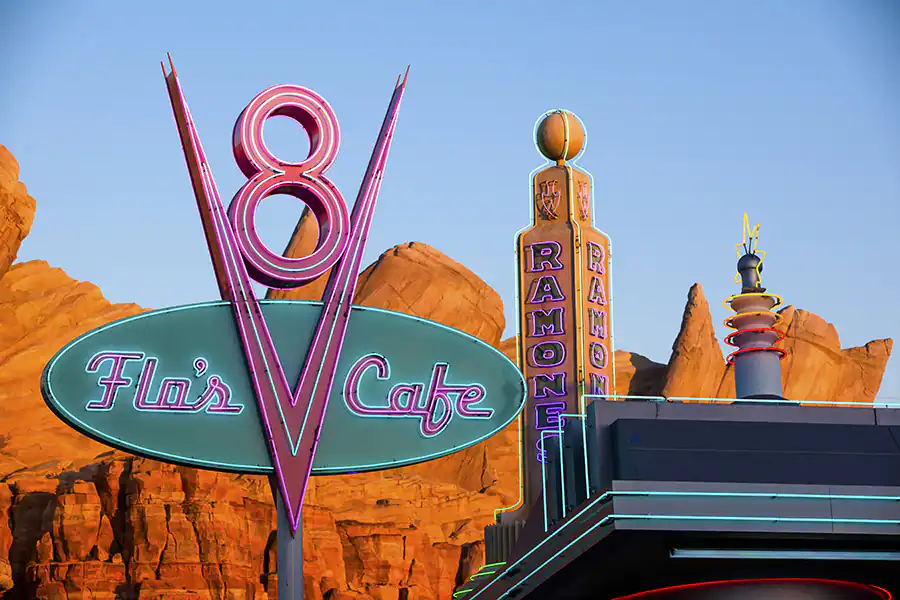
And okay, technically, the driving anchor of the park’s rebirth – Cars Land – isn’t exactly Californian, either. (The town of Radiator Springs is definitely somewhere in the American Southwest along Route 66, but decidedly not in California…) But hey, if you squint, it’s a love letter to California car culture, the landscapes of the West, little neon roadside towns, and the time-honored tradition of the westbound American road trip. Anyway, the addition of Buena Vista Street balanced the scales back toward the park’s newly-born, carefully-created Californian story and setting, right?
Make no mistake – the “DCA 2.0” that took shape in the five years preceding and in the wake of the park’s 2012 re-introduction was pretty inarguably a better park than it had been before by any measure. True to the goals of the billion dollar reimagining, the park had more than just new rides, restaurants, and shows; it had more life. More history. More characters. More greenery, rockwork, backstory, “stairs to nowhere,” and more of all the things that Imagineering fans adore, and visitors notice (consciously or otherwise)… This was a park with depth, texture, color, scale, quality, and character the park so desperately needed, reoriented for the future.
But certainly, a few quiet voices did begin to wonder… Was the park that was “too much California, not enough Disney” starting to tip too far in the opposite direction?

It stood to reason that in the blink of an eye, California Adventure had become “too much Disney, not enough California“… A park that featured beautifully decorated, lovingly crafted, and delightfully historic, idealized Californian lands… but where the attractions within those lands were almost exclusively devoted to Monsters Inc., A Bug’s Life, Finding Nemo, Up, Toy Story, and Cars…
Some online commentators suggested the park should’ve been reintroduced as Pixar’s California Adventure. Others imagined the park should drop its waning allegiance to California altogether, perhaps being renamed Disney·Pixar Adventure Park. But that wouldn’t have made sense given the addition of Buena Vista Street, or the revitalization of Hollywood Land, Grizzly Peak, Paradise Pier, Pacific Wharf…
Some even snidely recommended the name Disney·Pixar Studios – no doubt a dig at the increasingly IP-oriented park. And frankly, it did seem worth asking: was Disneyland’s second gate still a California Adventure?
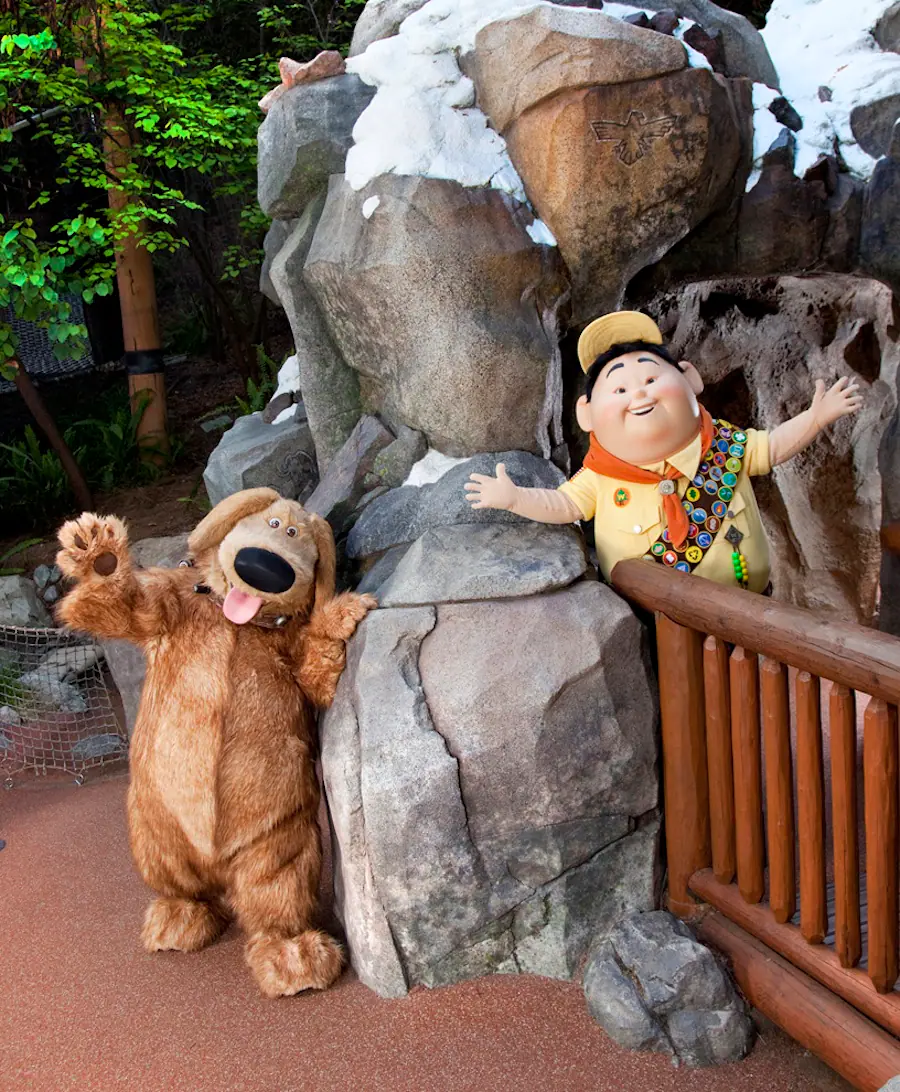
Even if the “Pixarification” of California Adventure had snuck in on the Trojan horse of a billion dollar reimagining, at least the park itself looked not just really good, but really Californian, nesting those characters in environments like Buena Vista Street, Hollywood Land, Paradise Pier, Pacific Wharf, Grizzly Peak, Condor Flats, et al – clear embodiments of an idealized, romanticized California…
And despite the animation invasion, at least California Adventure would always have its three Golden State pillars – the uniquely-Californian E-Tickets of Soarin’ Over California, The Twilight Zone Tower of Terror, and California Screamin’… Right?
While proverbial paint was still drying on “DCA 2.0,” Imagineering fans began to see an unusual shift. Was it an overcorrection from “DCA 1.0”? An abandonment of “DCA 2.0”? Both? Or something new entirely…? Let’s trace the story since 2012…


